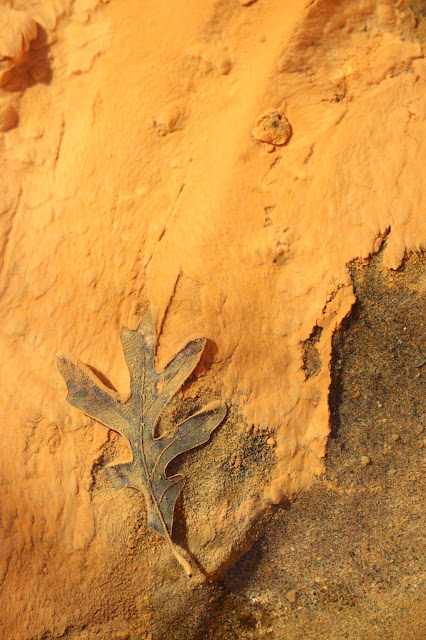Fluorescent Cephalopod
I was playing around with the UV lamp in my lab, seeing what might unexpectedly glow this afternoon. This was a nice surprise. It's an internal mold of Bacculites sp., a type of straight-shelled cephalopod. The bright ruffled cracks are called sutures. Like modern nautiluses, Bacculites had chambers in their shells. The sutures are where the walls of the chambers divided the sections. Bright orange like this usually indicates calcite, a mineral that makes up fossil shells and some modern ones, too. Between the mud-filled chambers, the shell was preserved while the exterior of the cone wore away. The shell material was either calcite to begin with or, more likely, began as aragonite (same chemical compound as calcite, but different crystal structure and glows yellow instead of orange) and changed over millions of years to the more stable configuration of calcite. Meanwhile, the mud looks like it may have a little bit of some fluorescent minerals in the mix, but it's mostly a daylight-only affair. The blue may be some residual glue from a label.



Comments
Post a Comment